Pig farming is the practice of raising domestic pigs as livestock and is a branch of animal husbandry. Pigs are a popular form of livestock, with more than one billion pigs slaughtered worldwide each year, 100 million of them in the United States. The pig is referred to as the swine or domestic pig. Let’s check out pig farming in the USA.
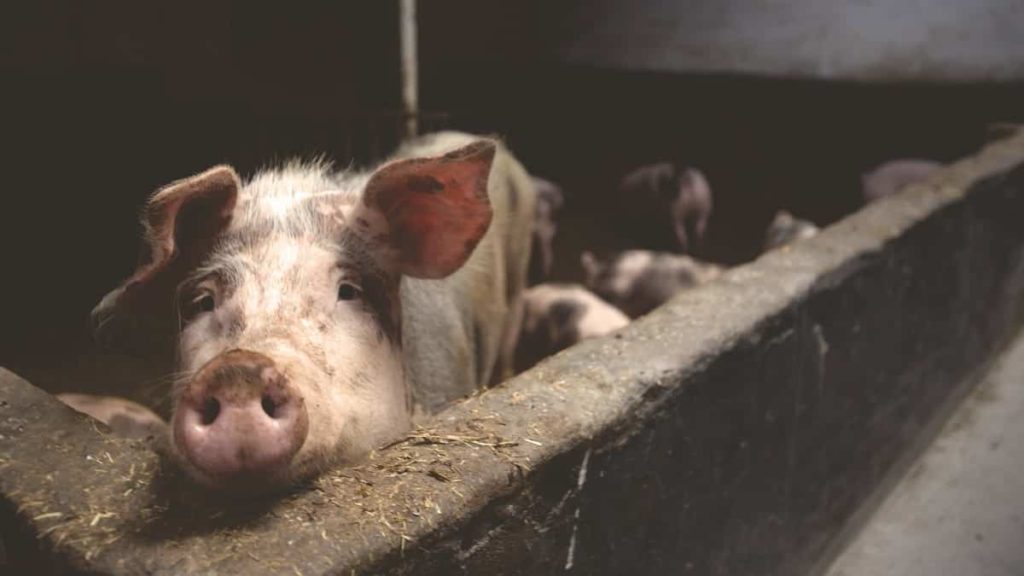
Pork production in the United States is estimated at $23.4 billion annually, with approximately 2.2 million metric tons of pork and pork products being exported to other countries. Pigs eat billions of bushels of grain and oilseeds, and provide income to more than 60,000 pork producers, mainly in the Midwest and North Carolina. Three types of producers run pig farms, independent farmers raise pigs for themselves, contract growers raise pigs for someone else, and contractors use contract farmers to raise some or all of their pigs.
Are pigs profitable in the USA?
Yes, they sure are. U.S. Pigs can earn a profit of $300- $400 per head if sold for quality and breeding stock or meat. Meat is in great demand both in its natural form and when it is processed. Unprocessed meat can be sold for $2.50 to $3.50 per pound.
Types of US pig farms
Approximately, there are more than 60,000 pig farms in the United States. They include different sizes and types of farms, and they raise pork to meet a wide variety of consumer demands. There are different ways of raising pigs, including small-scale farms, large-scale farms, and those whose rearing methods operate in specific markets, such as consumers who want to raise pork with external access or heirloom breeds (such as Berkshire pork).
In addition to more consumer choice, more efficiency and increased productivity in US pig farms have resulted in more abundant, affordable pork supplies in the United States and abroad. No matter the size or type of pig farm, the basic principles of animal husbandry remain the same – good animal care, land management, safe, healthy food production, and care for employees and communities.
In case you miss this: Pig Feed Formulation; Types of Pig Feed – A Full Guide
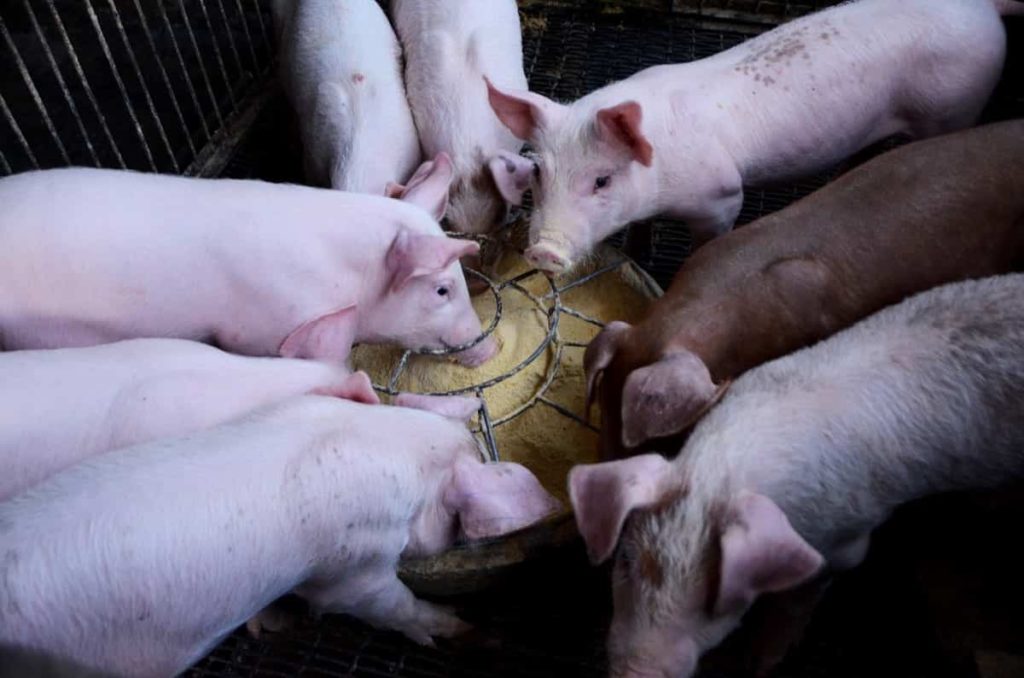
- Farrow-to-finish – Farms manage all stages of pig rearing and development, from breeding to finishing, with a market weight of approximately 285 pounds.
- From farrow to nursery – Farms specialize in breeding sows and raising 40–50-pound feeder pigs, which are then sold to farms that specialize in feeding pigs until they reach market weight.
- Farrow-to-wean – Farms monitor breeding herds and raise pigs until their weaning is about 10 to 15 pounds, at which time they are sold to wean-to-finish farms.
- Wean-to-finish – Farms buy weaned pigs from farrow-to-wean farms and raise them until they reach market weight.
- Finishing – Farms buy 40 to 50 pounds of feeder pigs from nursery farms and raise them until they reach market weight.
Problems faced by pig farmers in pig farming
African swine fever and sow health – Diseases such as the current outbreak of African swine fever (ASF) could have serious effects on swine production worldwide. Experts estimate that 10 million sows and 100 million pigs have died at the hands of ASF. The disease is spreading across East Asia, with reports now coming from Vietnam, Cambodia, North Korea, and Laos.
There is no effective vaccine for ASF and no effective treatment. Infected pigs should be euthanized. Kansas State University research is looking at the potential for the spread of the disease through infected feeds. Although large amounts of the virus are required for transmission, it can have an overall effect if fed over time.
Millions of kilograms of feed components are imported from countries where the ASF virus is currently circulating. Sow Prolapse Syndrome is a growing concern for U.S. pig breeders. Vaginal and uterine prolapses result in sow and pre-weaning mortality. The exact cause and treatment of the syndrome are unknown. The sow mortality due to prolapse increased by 2-5% in some operations in recent years.
In case you miss this: Pig Feed Chart and Pig Weight Chart for Beginners
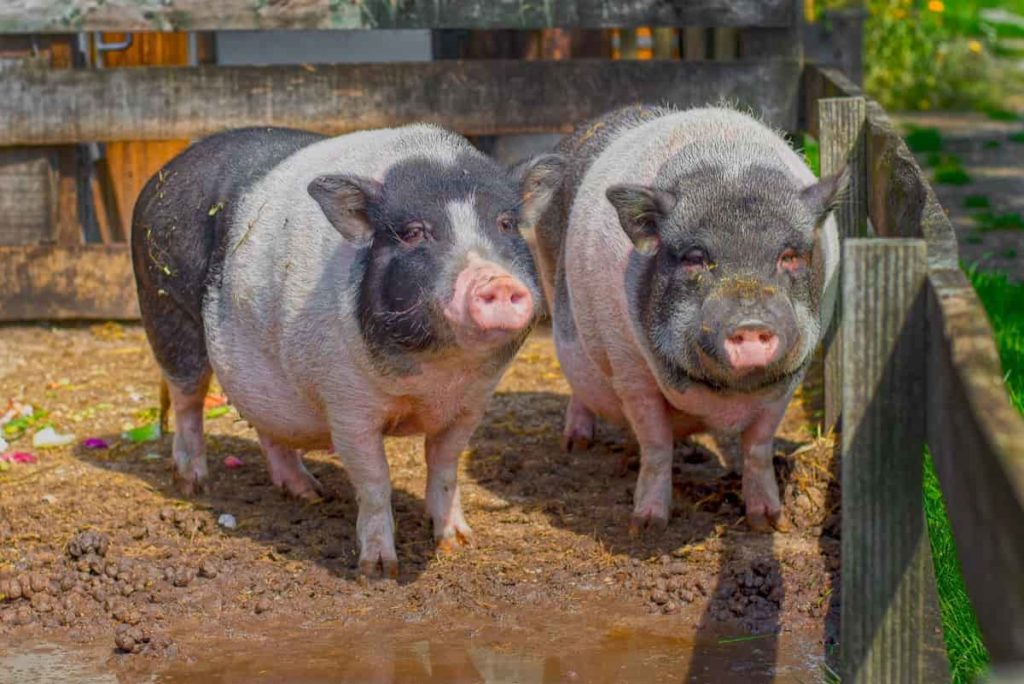
Factors that will affect the profitability of pig farming
Free-range for quality
Today, the ethical treatment of animals is an important factor for consumers. The general idea is that, if the living environment of the animal is better, then the resulting meat is ethically more palatable and of better quality.
Feed cost
The cost of feed for raising pigs may be the most expensive. The cost of feed will be about three-quarters of the total cost of raising pigs. Wheat, corn, soybeans, and whatever grass or vegetables are all good food for pigs. Most pigs are fed pellet food which contains all the essential elements to keep them healthy. It is possible to buy feed at about 20 to 30 cents per pound. A ton of pellet food will cost an average of $300. A pig will eat about 4% of its body weight daily and will gain weight every day.
Other costs
Like any other animal, the most important value besides feed is where they are kept. Under local legislation, keeping pigs in your backyard is realistic. Breeding pigs for profit will require a large herd and a large area of land. About 30 pigs can live comfortably on an acre of land, so not as much land as some other animals. However, more land will allow them to move and will help prevent land deterioration.
Selling price
In pig farming, the key to making a profit is how they are sold. Many markets can and should be entertained to be able to maximize income.
In case you miss this: Organic Pig Farming, And Production Guide
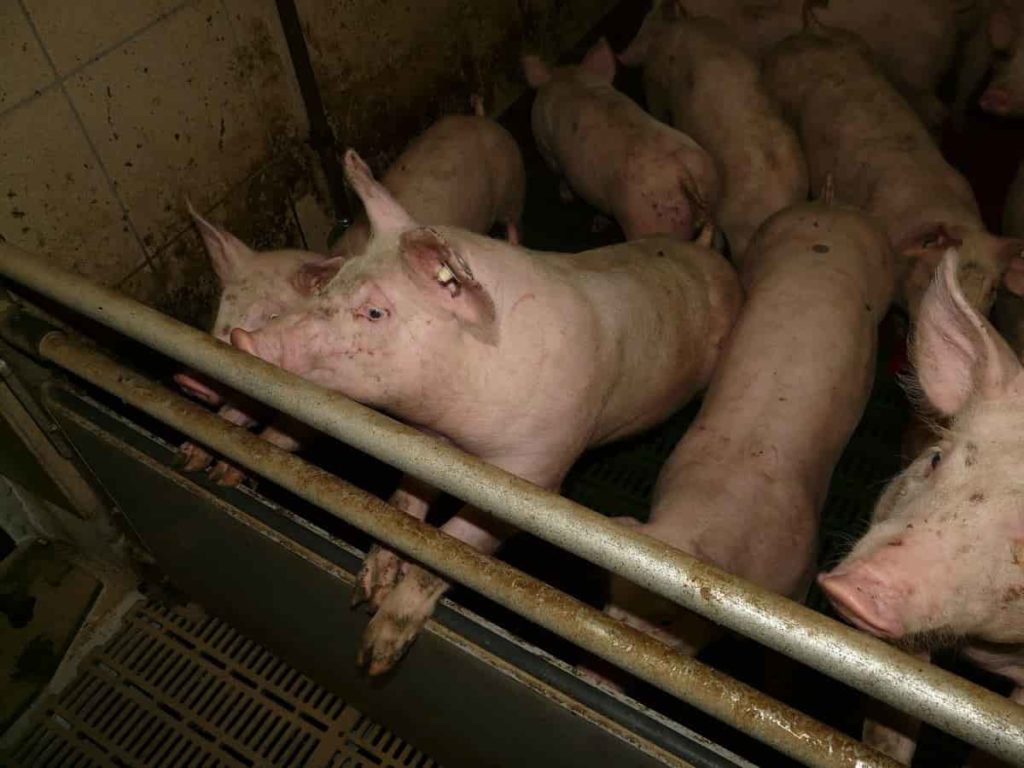
Selling live pigs
This is a demand of young pigs or weaners. They can be sold when they are 8 to 10 months old, which is when they do not need to be fed by their mother. Pigs can fetch a selling price in the region of $4 per pound. A pig often has a whip of 15 piglets twice a year. This will take some time to mature. At that point, it would be better to sell them to some weaner. The birth of several pigs at different times can provide a regular income by selling a portion of young pigs.
Selling pigs for meat
One of the most popular ways to sell pigs for a profit is to butcher them for sale. Typically, pigs will be reared for about 6 to 8 months when they weigh about 250 pounds (113 kg).
Important pig farming companies in the USA
- Seaboard Corporation, Merriam, Kansas, United States
- Murphy-Brown LLCWarsaw, North Carolina
- The Clemens Family Corporation, Hatfield, Pennsylvania
- Seaboard Foods LLC, Shawnee Mission, Kansas
- Seaboard Farms, Inc.Guymon, Oklahoma
- United Animal Health, Inc.Sheridan, Indiana
- Prestage Farms, Inc.Clinton, North Carolina
- The Maschhoffs LLCCarlyle, Illinois
- New Fashion Pork, LLPJackson, Minnesota
- Pic Usa, Inc.Hendersonville, Tennessee
- Linda Terra FarmsRiverdale, California
- Suidae Veterinary Supply & Biologics, Inc.Algona, Iowa
- Hastings Pork CorporationHastings, Nebraska
- Red Willow Hutterian Brethren, Inc.Aberdeen, South Dakota
In case you miss this: Pig Farming Tips, Techniques, Ideas, and Secrets
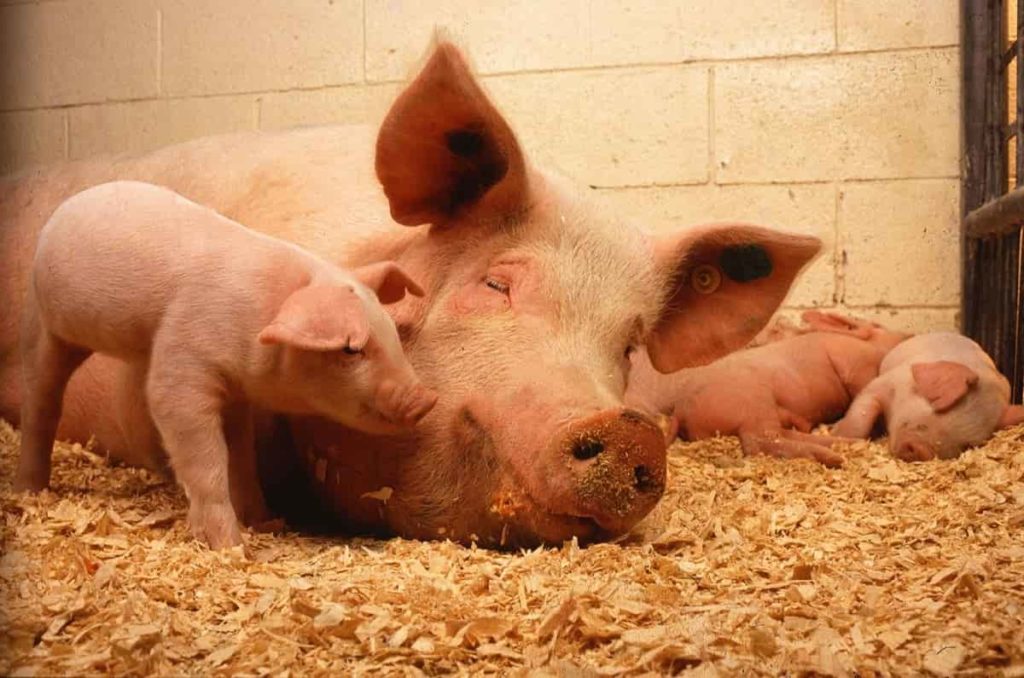
Pig breeds in the USA
The important breeds are Hereford Pig, Mulefoot, Ossabaw Island, Poland China, Red Wattle, American Landrace Pig, Berkshire, Chester White, Duroc Pig, Hampshire Pig, and Spotted Swine Breed.
More farmers opt to contract pig feed
Most U.S. pork production involves contract feeding. Pig provides cash flow and grain fertilizer to growers as a natural fertilizer, which reduces the cost of chemical fertilizers. The first step for a potential producer is to get to know the company and make sure they are fit, says Kent Mowrer, senior field coordinator for the Coalition to Support Iowa Farmers. Producers need to make sure they meet the labor, land, biosecurity, and financial needs. Each company has a preference for building style and has its own payment system.
Start a pig farm in the USA
There are two common ways to enter the pig industry: raising a pig for another farmer or producer as an independent operator or as a contract farmer. A third player in the industry is a large corporation or contractor that employs other contractors and producers to raise some or all of their pigs.
These integrators and packers take care of their interests and contractors before turning to independent producers without a contract, so this should be kept in mind. Many large contractors use company or industry standards to describe the size, shape, design, and ventilation details. They should keep in mind that most construction loans last 10 to 15 years, the life of the barn should be 30 to 40 years.
In case you miss this: Pig Diseases, Symptoms, and Treatment
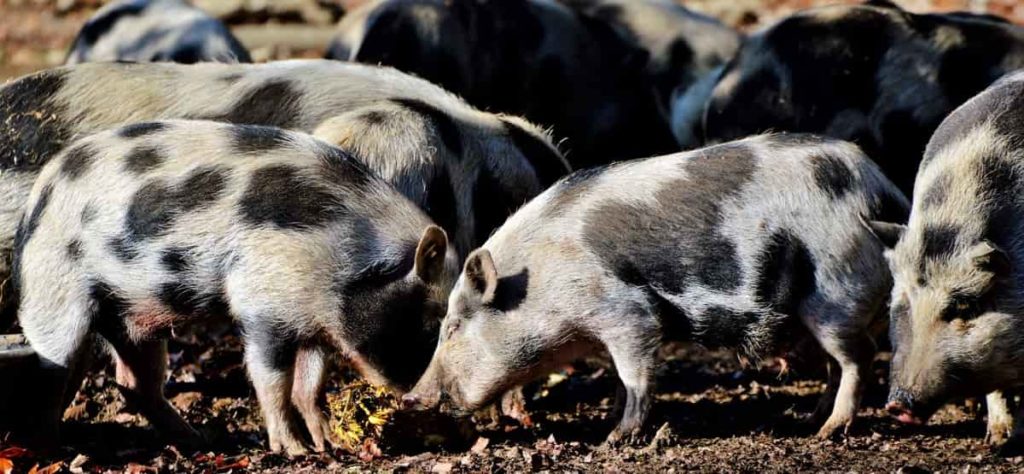
Swine company representatives discussed contract production, barn, and infrastructure costs and expectations at a Farming for the Future conference in Ames, Iowa. The long-term approach is most important because the barn must be well-built, providing adequate comfort and stress-free space for proper animal welfare. Each barn is different, but the cost of a 2500-head wean-to-tunnel barn is approximately $300 to $310/pig space, or about $730 to 800 thousand dollars. A good quality water supply is imperative.
Conclusion
If you live in the United States and plan for commercial pig farming, this article may help to a certain extent to set up and run your pig farming business.
- Types of Pesticides Used in Agriculture: A Beginner’s Guide
- Economical Aquaculture: A Guide to Low-Budget Fish Farming
- 15 Common Planting Errors That Can Doom Your Fruit Trees
- How to Make Houseplants Bushy: Effective Tips and Ideas
- Innovative Strategies for Boosting Coconut Pollination and Yield
- Pollination Strategies for Maximum Pumpkin Yield
- The Complete Guide to Chicken Fattening: Strategies for Maximum Growth
- Natural Solutions for Tulip Problems: 100% Effective Remedies for Leaf and Bulb-Related Issues
- Revolutionizing Citrus Preservation: Towards a Healthier, Greener Future
- Natural Solutions for Peony Leaf and Flower Problems: 100% Effective Remedies
- Maximizing Profits with Avocado Contract Farming in India: A Comprehensive Guide
- Natural Solutions for Hydrangea Problems: 100% Effective Remedies for Leaf and Flowers
- The Ultimate Guide to Choosing the Perfect Foliage Friend: Bringing Life Indoors
- From Sunlight to Sustainability: 15 Ways to Use Solar Technology in Agriculture
- The Ultimate Guide to Dong Tao Chicken: Exploring from History to Raising
- The Eco-Friendly Makeover: How to Convert Your Unused Swimming Pool into a Fish Pond
- Mastering the Art of Delaware Chicken Farming: Essentials for Healthy Backyard Flocks
- 20 Best Homemade Fertilizers for Money Plant: DIY Recipes and Application Methods
- How to Craft a Comprehensive Free-Range Chicken Farming Business Plan
- Brighten Your Flock: Raising Easter Egger Chickens for Beauty and Bounty
- How to Optimize Your Poultry Egg Farm Business Plan with These Strategies
- Subsidy for Spirulina Cultivation: How Indian Government Schemes Encouraging Spirulina Farmers
- Ultimate Guide to Raising Dominique Chickens: Breeding, Feeding, Egg-Production, and Care
- Mastering the Art of Raising Jersey Giant Chickens: Care, Feeding, and More
- Ultimate Guide to Raising Legbar Chickens: Breeding, Farming Practices, Diet, Egg-Production
- How to Raise Welsummer Chickens: A Comprehensive Guide for Beginners
- How to Protect Indoor Plants in Winter: A Comprehensive Guide
- Ultimate Guide to Grow Bag Gardening: Tips, Tricks, and Planting Ideas for Urban Gardeners
- Guide to Lotus Cultivation: How to Propagate, Plant, Grow, Care, Cost, and Profit
- Agriculture Drone Subsidy Scheme: Government Kisan Subsidy, License, and How to Apply Online
- Ultimate Guide to Raising Araucana Chickens: Breed Profile, Farming Economics, Diet, and Care
- Bringing Hydroponics to Classroom: Importance, Benefits of Learning for School Students
- Ultimate Guide to Raising Polish Chickens: Breed Profile, Farming Economics, Diet, and Care
- Ultimate Guide to Raising Australorp Chickens: Profile, Farming Economics, Egg Production, Diet, and Care
- Silkie Chicken Farming: Raising Practices, Varieties, Egg Production, Diet, and Care
- Sussex Chicken Farming: Raising Practices, Varieties, Egg Production, Diet and Care
I have a small farm in Nigeria, I need your assistance